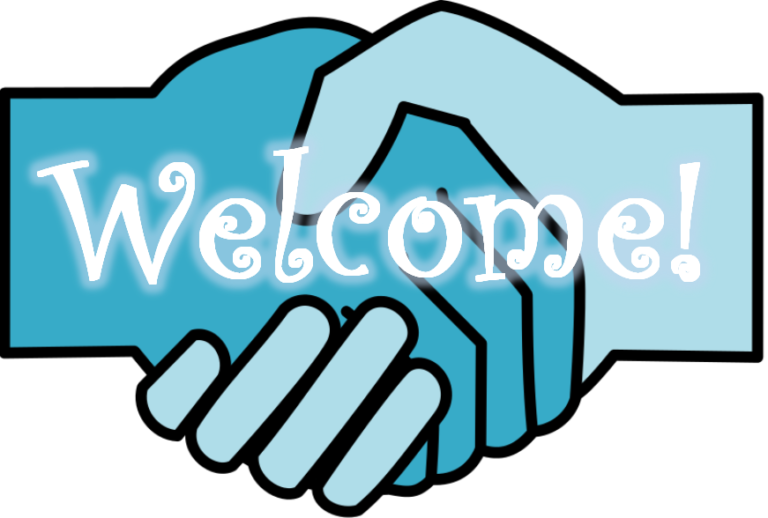Literacy Activities for Preschool
Creating literacy-rich environments is certainly a buzz phrase in preschool classrooms. It seems that everyone is always looking for new literacy activities to make their preschool classrooms literacy-rich. But, unfortunately, what appears to be missing from a lot of these conversations is meaning.
It’s not enough to just have a lot of print in your environment.
Research has shown us that just putting a lot of print in the environment doesn’t mean that children pay attention to it. They may even start to ignore it. Instead, current research suggests that we should make sure that we create print-rich environments that are meaningful. Gone are the days when we label everything in the classroom, such as the door, the chair, and the window. These labels have little to no meaning to children. Instead, we have to look at the children in our preschool classroom and determine what type of literacy activities would be meaningful. Some universal activities are meaningful to preschoolers, such as anything having to do with their name. However, what might be significant to one classroom might not be so meaningful to another school. (For more information about print awareness, visit Reading Rockets).
Are your preschool literacy activities meaningful to children?
I encourage you to question all of the literacy activities you put in your preschool environment to determine if it is meaningful to the children. For example, are the signs that label each area (Dramatic Play, Blocks, etc.) meaningful to children? Or are they just something that someone, somewhere along the way, told you that you had to have? (I’ve yet to see these signs as actually being required in any quality improvement program or accreditation standards even though many teachers insist that they are needed). Are the labels you have on your shelves helpful to the children? Or are they a nuisance? Is the alphabet poster something that children use, or does it add to the visual clutter of the room? The answers to all of these questions may be different for every classroom. My point is that you have to be the one to evaluate each literacy critically.
Sample Preschool Literacy Activities that are Meaningful
So, what are some examples of literacy activities that other preschool teachers have found meaningful? Let’s take a look. But even with these suggested activities, don’t forget to ask yourself if these will be meaningful for YOUR group of children!
Meaningful Labels in the Classroom
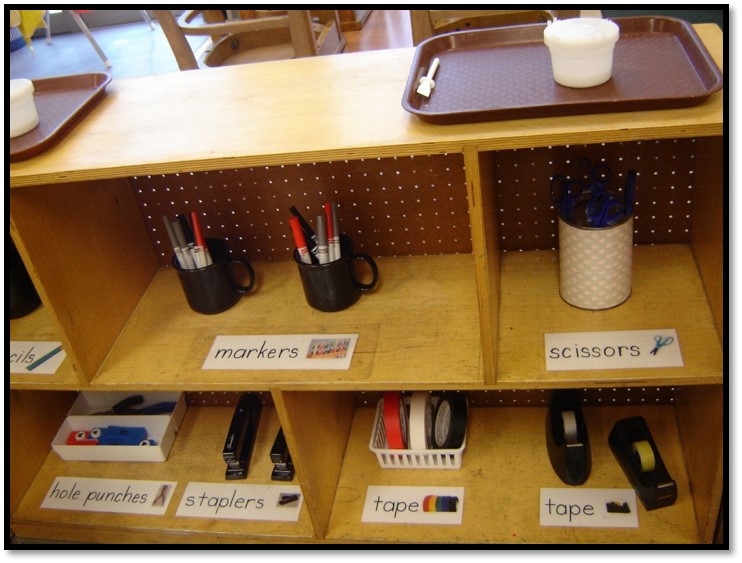
Some labels are meaningful. These labels help children know where to put the art materials when returning them to the shelves.
Using Meaningful Print in the Science Center is a Great Literacy Activity for Preschoolers
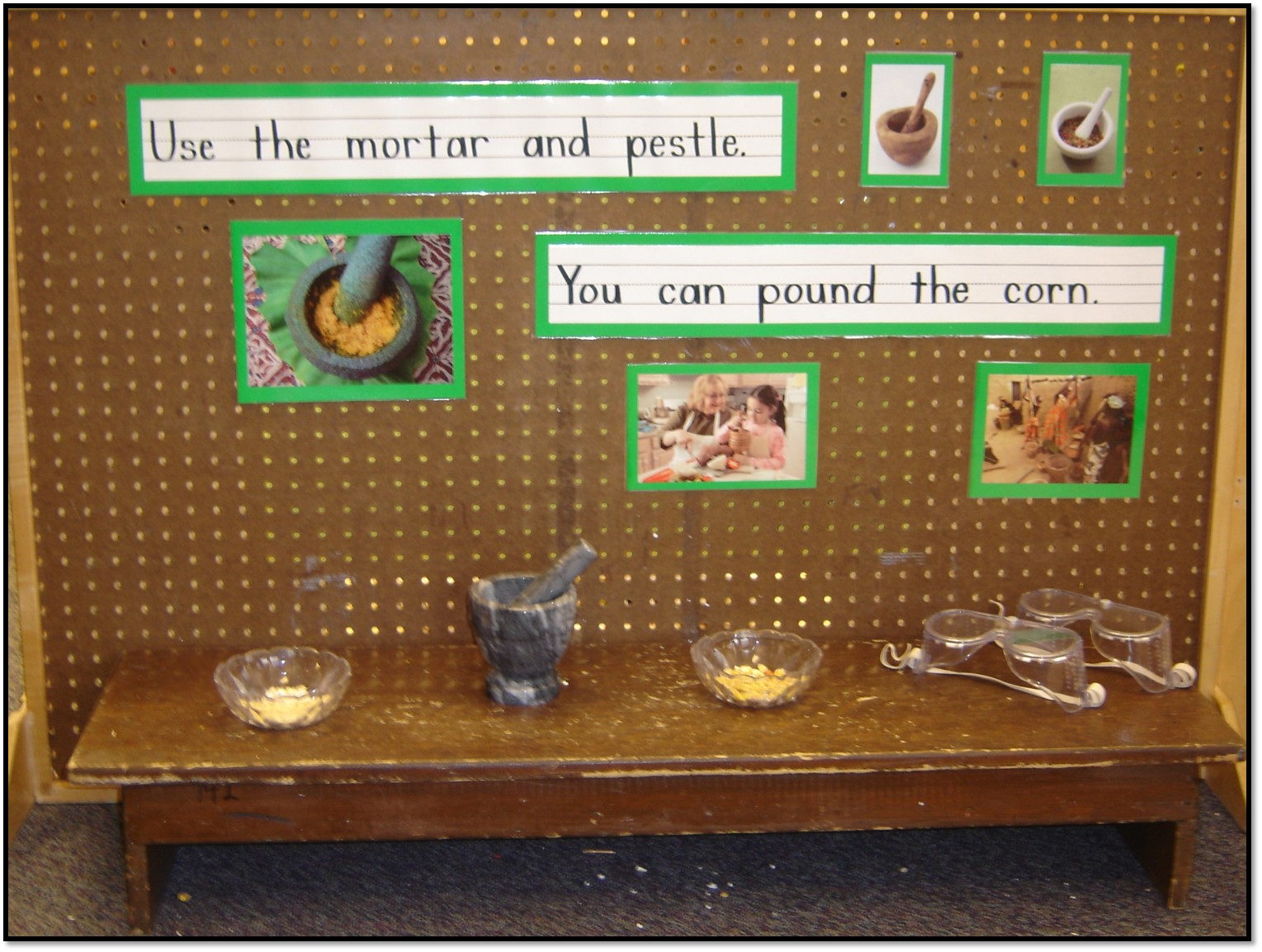
This science center has an example of meaningful print. While the children cannot read this print yet in this preschool classroom, they will notice that the print has changed and will likely as the teacher what it says. As a result, this type of literacy activity is much more meaningful to preschoolers than a sign that says “Science Area.”
A Cozy Book Area
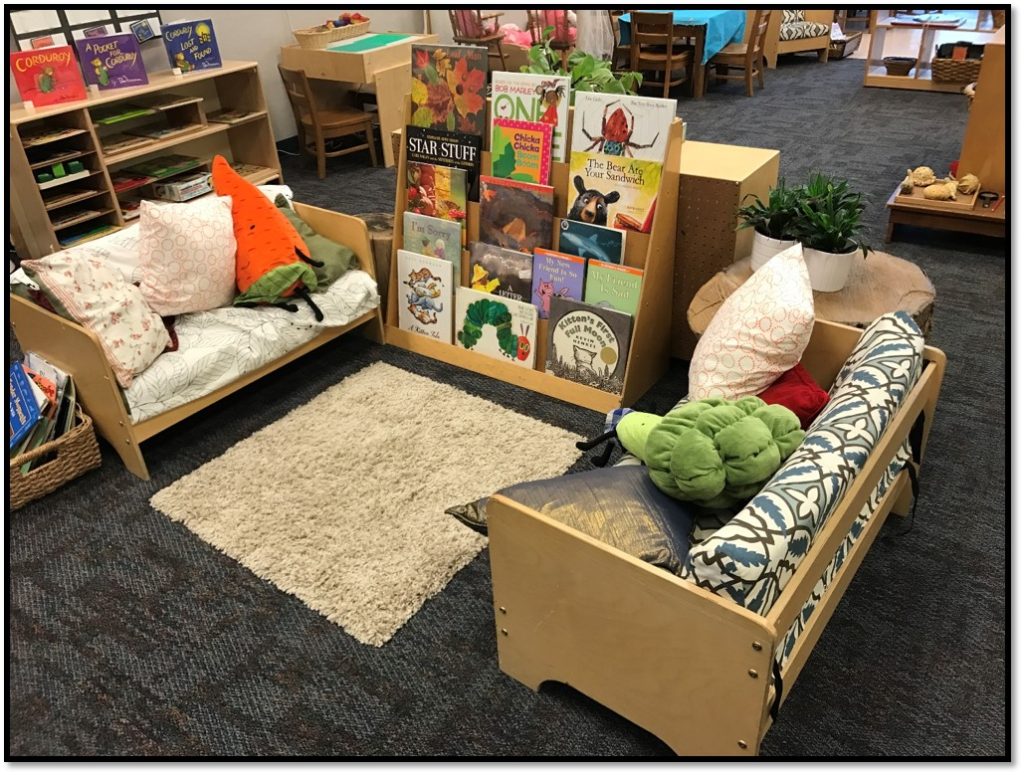
This cozy reading area is a big hit with children. It includes many cozy features, including pillows, rugs, and plants.
A Private Listening Center
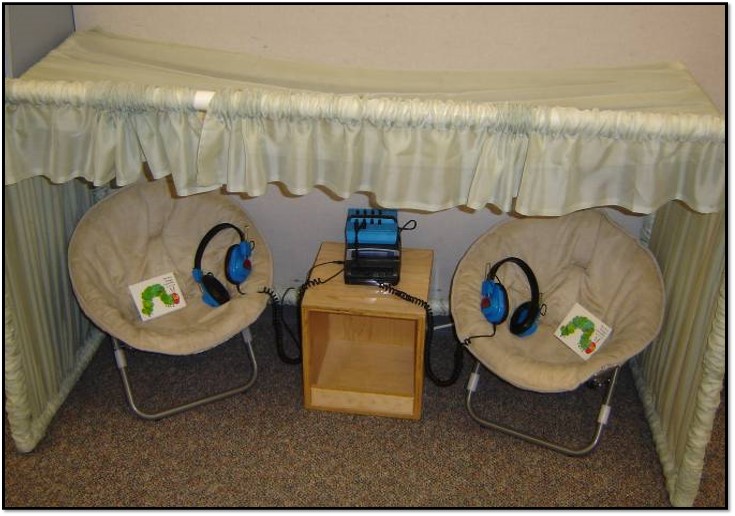
I made this listening center from PVC pipe and a cheap curtain. You can imagine how much children loved getting away to this area!
Add Books to Other Areas of the Room
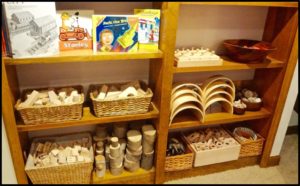
Don’t forget to include books in other areas! But, of course, only add books that have significance to the learning center.
Sign-In Activity: Children’s Names are Always Meaningful
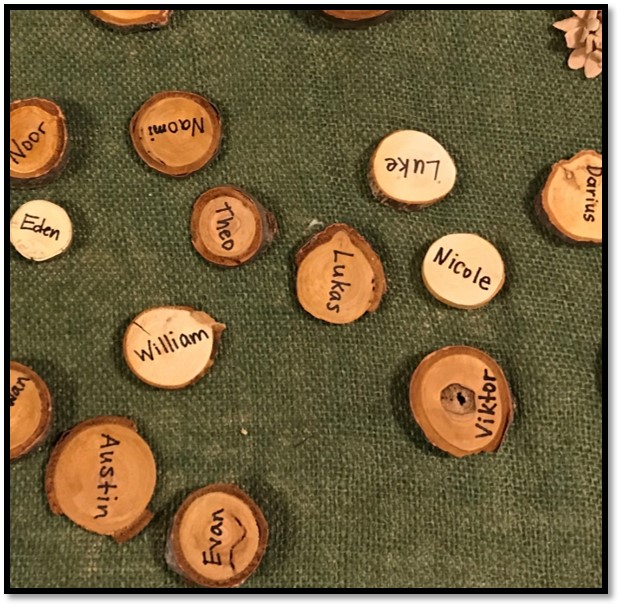
This is one of my favorite literacy activities for preschool classrooms! When children walk into this classroom, they locate their name on the woodchip and then place it into a basket. Teachers can then use the basket to talk about who is here (or not) at group time or other times during the day.
Meaningful Literacy Experiences in the Writing Center
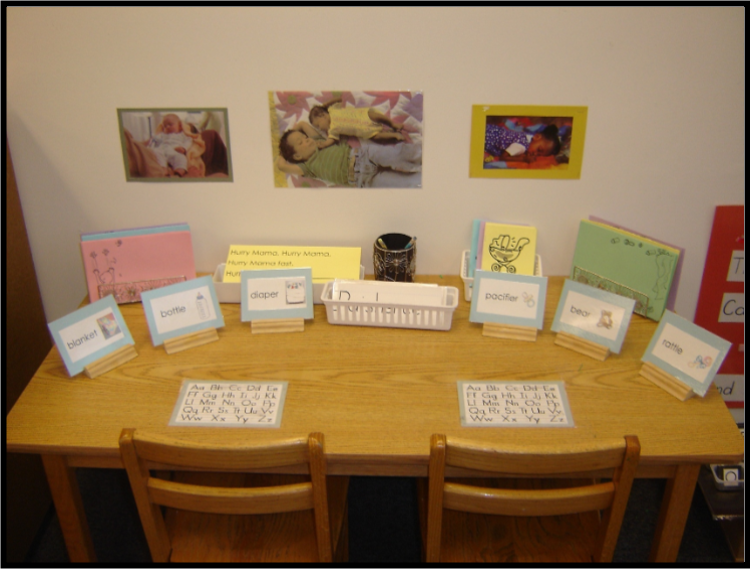
This writing table is inviting to children. The table is set up for two children because writing during the preschool years tends to be a social experience. The table has blank paper, blank books, fill-in strips with the words to a popular song the children were singing, children’s name cards (and teachers), pencils, alphabet samples, and word cards to put in the fill-in strip blanks.
Job Charts
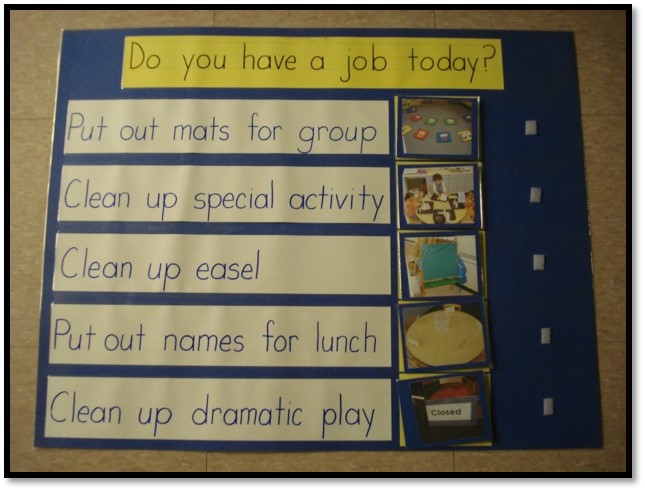
Job charts are another way to include meaningful print in your classroom! Choose jobs that are helpful to you and make an impact in the room. This will help build a sense of community.
Literacy Manipulative Activity for Preschool
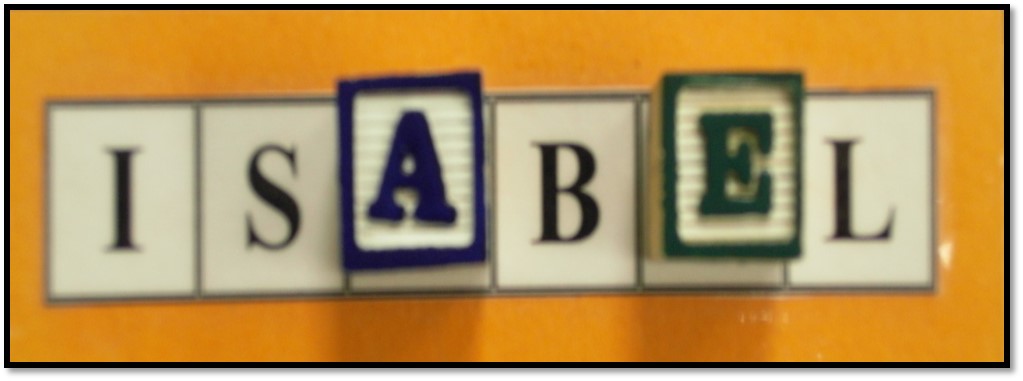
These small alphabet blocks are fun to put on top of these laminated name cards. Note: The name cards had all capital letters because the alphabet blocks were not available with lower case letters, and this class was not yet able to match case on the letters. Typically, all name cards should use Sentence Case – with a capital first letter and lower case letters for the rest of the name.
Small-Group Literacy Activity for Preschool
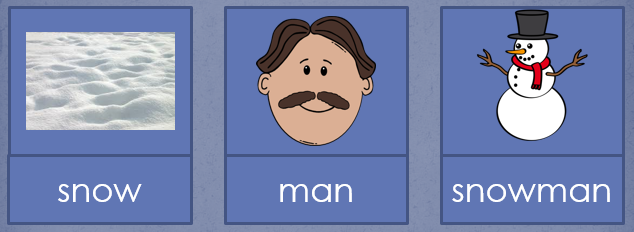
This compound word activity can be fun for older preschoolers. Children try to find the two words that make up the compound word.
Sorting Syllables Activity to Promote Phonological Awareness
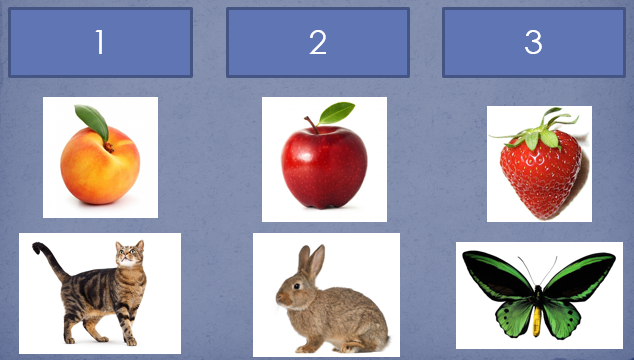
In this activity, children sort word cards by the number of syllables they hear.
This is just a sampling of activities to start your literacy program. What ideas do you have, and what makes them meaningful to children?
Want to learn more about meaningful literacy activities for your preschool classroom? We have several courses just for you!
Creating Your Literacy Curriculum – 3 hours
Learn how to create a great literacy curriculum for your classroom!
Moving Beyond Letter of the Week – 3 hours
Learn how to teach letters and sounds through a holistic approach.
Creating Neural Pathways for Literacy – 2.5 hours
Learn how to activate the letter-box region. You will leave with ideas for activities that create neural pathways for literacy.



